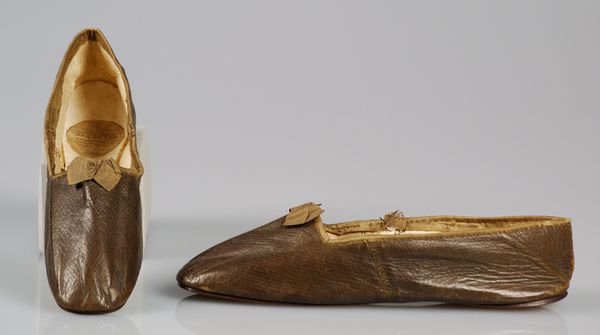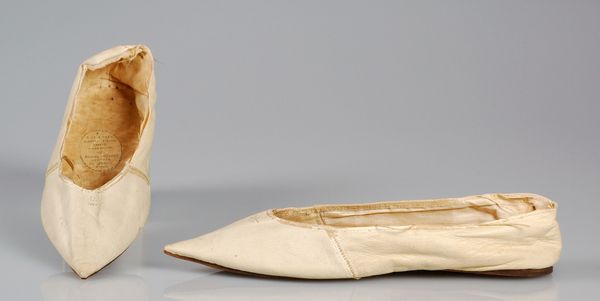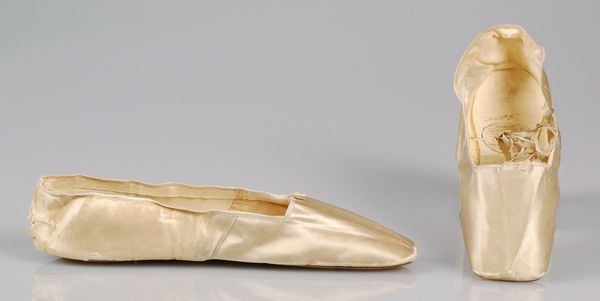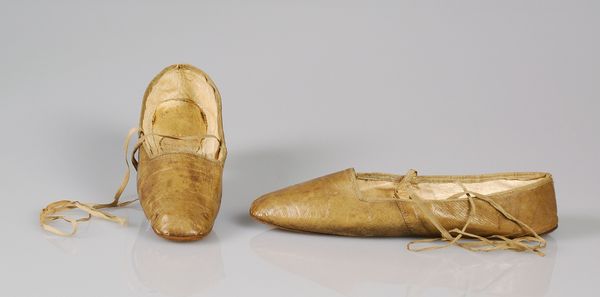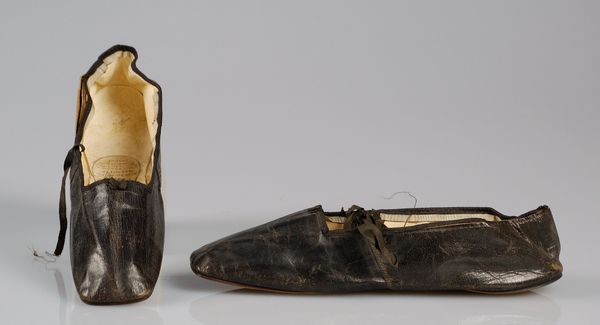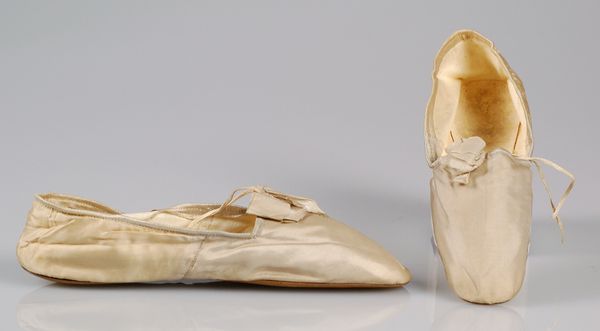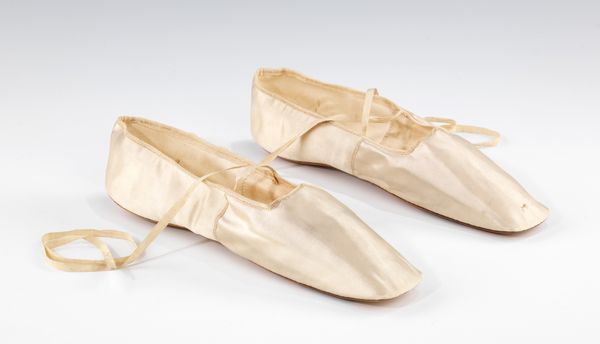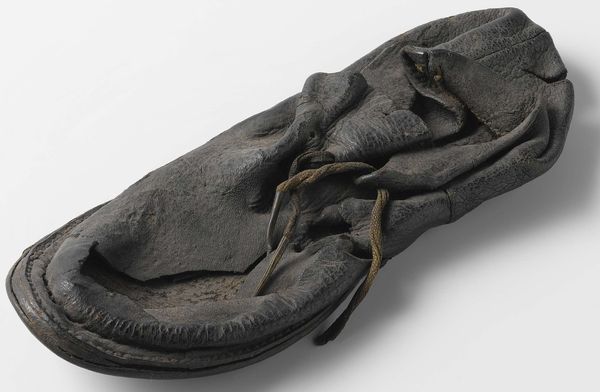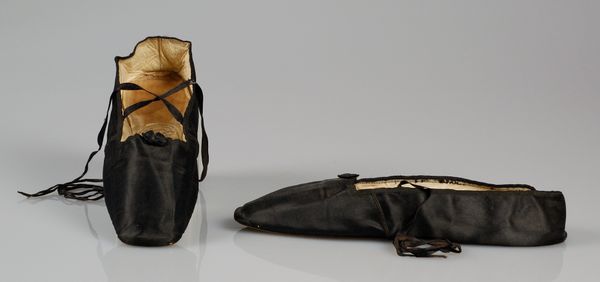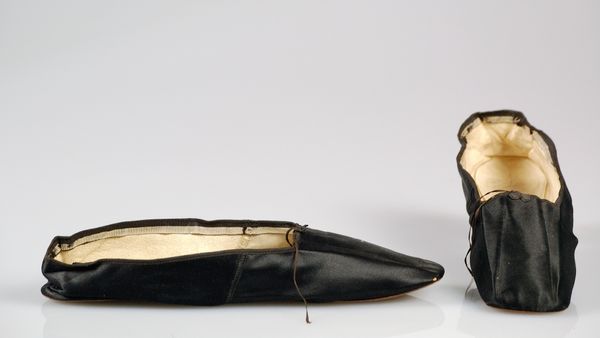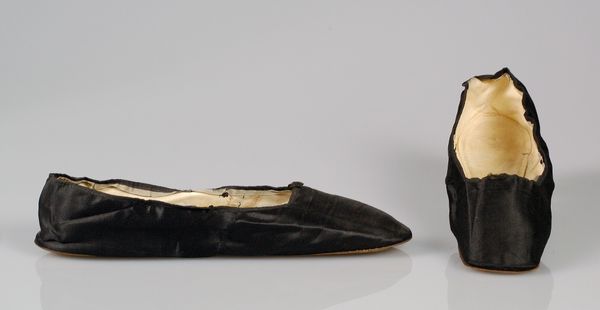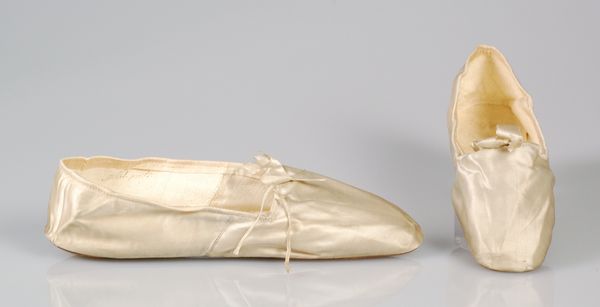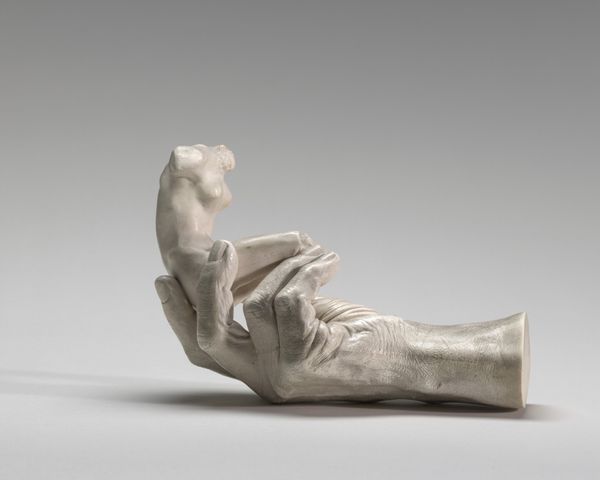
textile
#
textile
#
romanticism
#
ceramic
#
costume
#
curved shape
#
decorative-art
Copyright: Public Domain
Editor: These are a pair of "Evening Slippers," dating from 1812 to 1817. They’re part of the Metropolitan Museum of Art's collection. They are made of textile. What strikes me is their fragility; they look like they’ve really lived. What can you tell me about their cultural context? Curator: Indeed, their fragile state speaks volumes. Consider the Romantic period, the era in which these slippers were made. The aristocracy experienced shifting political sands and, in response, a return to tradition and symbols of refinement. Shoes such as these become statements of belonging to this cultural class. Editor: So, something seemingly so simple as a slipper became politicized? Curator: Absolutely! The delicacy and impracticality signal leisure and elevated status. Notice the curved shapes; how do these visual elements contribute to the object’s message? Editor: They do suggest grace and elegance. They look almost too delicate to walk in. Curator: Precisely. The act of wearing them became a carefully orchestrated performance. Furthermore, the relatively short lifespan given the rapid pace of social engagements meant more were made—and preserved. Consider how museums have carefully maintained slippers such as these while discarding functional working shoes as invaluable tools. Editor: So the survival of this type of slipper speaks to cultural priorities around value, wealth, and legacy, which can become skewed or overlooked. This has certainly given me something to think about. Curator: It’s fascinating how such intimate objects like these evening slippers reveal broader social narratives. I find this recontextualization provides insight on cultural patterns to consider!
Comments
No comments
Be the first to comment and join the conversation on the ultimate creative platform.
